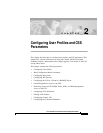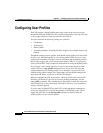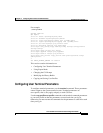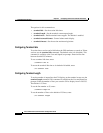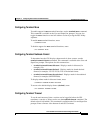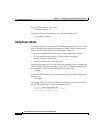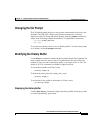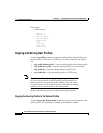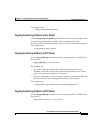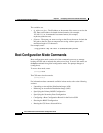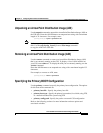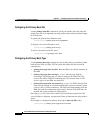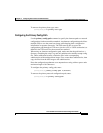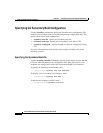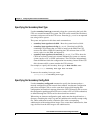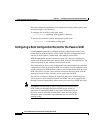
Chapter 2 Configuring User Profiles and CSS Parameters
Configuring User Profiles
2-2
Cisco Content Services Switch Basic Configuration Guide
78-11424-03
Configuring User Profiles
The CSS contains a default-profile that resides in the scripts directory on the
Internal Disk Module (IDM). This file contains settings that are user-specific; that
is, they apply uniquely to each user when the user logs in.
You can customize the following settings for each user:
• CLI prompt
• Expert mode
• History buffer
• Terminal parameters, including idle time, length, more, netmask format, and
timeout
Though the settings are user-specific, each default setting applies to all users until
the user saves the default-profile to a username-profile (where username is the
current login username). You may choose to continue using the default-profile so
that all users logging into a CSS use the same settings. Refer to “Copying and
Saving User Profiles” in this chapter for information on saving the default-profile.
If you change a user setting and want to save it in the scripts directory of the
current ADI, use a copy profile command. If you do not, the CSS stores the
setting temporarily in a running-profile. If you attempt to log out of the CSS
without saving profile changes, the CSS prompts you that profile changes have
been made and allows you to save or discard the changes.
When you upgrade the ADI, user profiles, which are saved in the current ADI
directory, are deleted. If you wish to save user profiles permanently, use the
save_profile command. This command saves the profiles in both the scripts and
archive directories in the current ADI. The archive directory is not overwritten
during a software upgrade.
To access the CSS IDM, FTP into the CSS. Use the appropriate commands to
access the scripts directory and list the contents of the default-profile. When
logged into the CSS, use the show profile command to display either the
default-profile or your username-profile.



